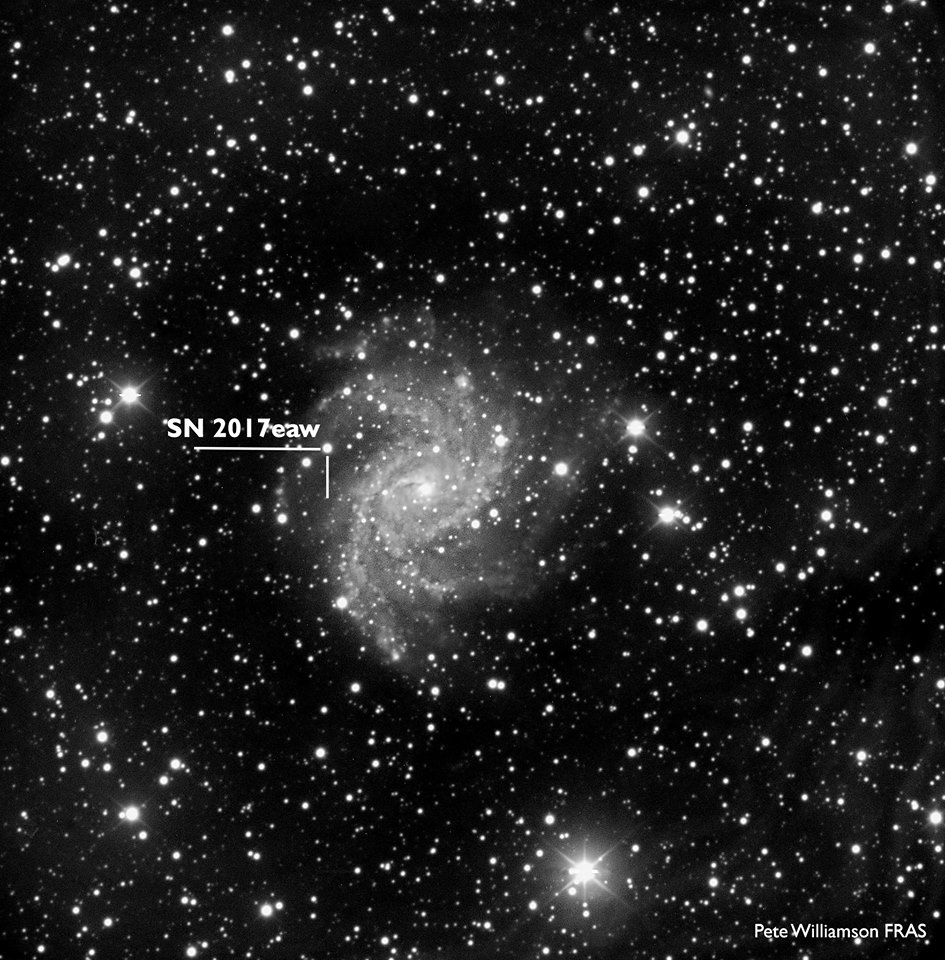-
Faulkes Telescope Project Privacy Policy
A Supernova Sensation in Spiral Galaxy NGC 6946

Credit: Pete Williamson using a clear filter on the 1-metre telescope at McDonald Observatory. LCO.
On the 14th May a supernova called SN2017eaw was reported by Patrick Wiggins in the spiral galaxy NGC 6946. Spectroscopic observations confirmed the supernova as a type IIP. A type II supernova is the result of a massive star exploding at the end of its life. Light curves of these objects (a plot of brightness against time) show an initial very rapid rise in brightness before gradually declining over time. The P in a type IIP supernova stands for plateau; these objects are classified according to the very distinct plateau in their light curve where the brightness decreases at a much slower rate.
The host galaxy NGC 6946 is also often known as the “Fireworks Galaxy” due to its appearance. The galaxy lies around 22 million light years away from Earth, and has hosted no less than 9 supernovae since the beginning of the 20th Century. SN2017eaw is number 10.
One of our users, Pete Williamson has taken a lovely image of the supernova and NGC 6946 as seen below. The magnitude is estimated to be 12 but could be expected to rise to 11 (magnitude scales are reverse, so a lower number represents a brighter object).
If you would like to image the spiral galaxy and supernova we have some suggested exposures kindly provided by Pete:
Right Ascension: 20:34:52.3
Declination: +60:09:14
2-metre (Faulkes Telescope North)
3 exposures of 120 seconds in clear filter
120 second exposures in RVB if you would like to add colour to your image
1-metre
Using the same filters, increase your exposures to 180 seconds
0.4-metre
Using the same filters, increase your exposures to 300 seconds
Don’t forget to let us know how you get on!
Posted in News
